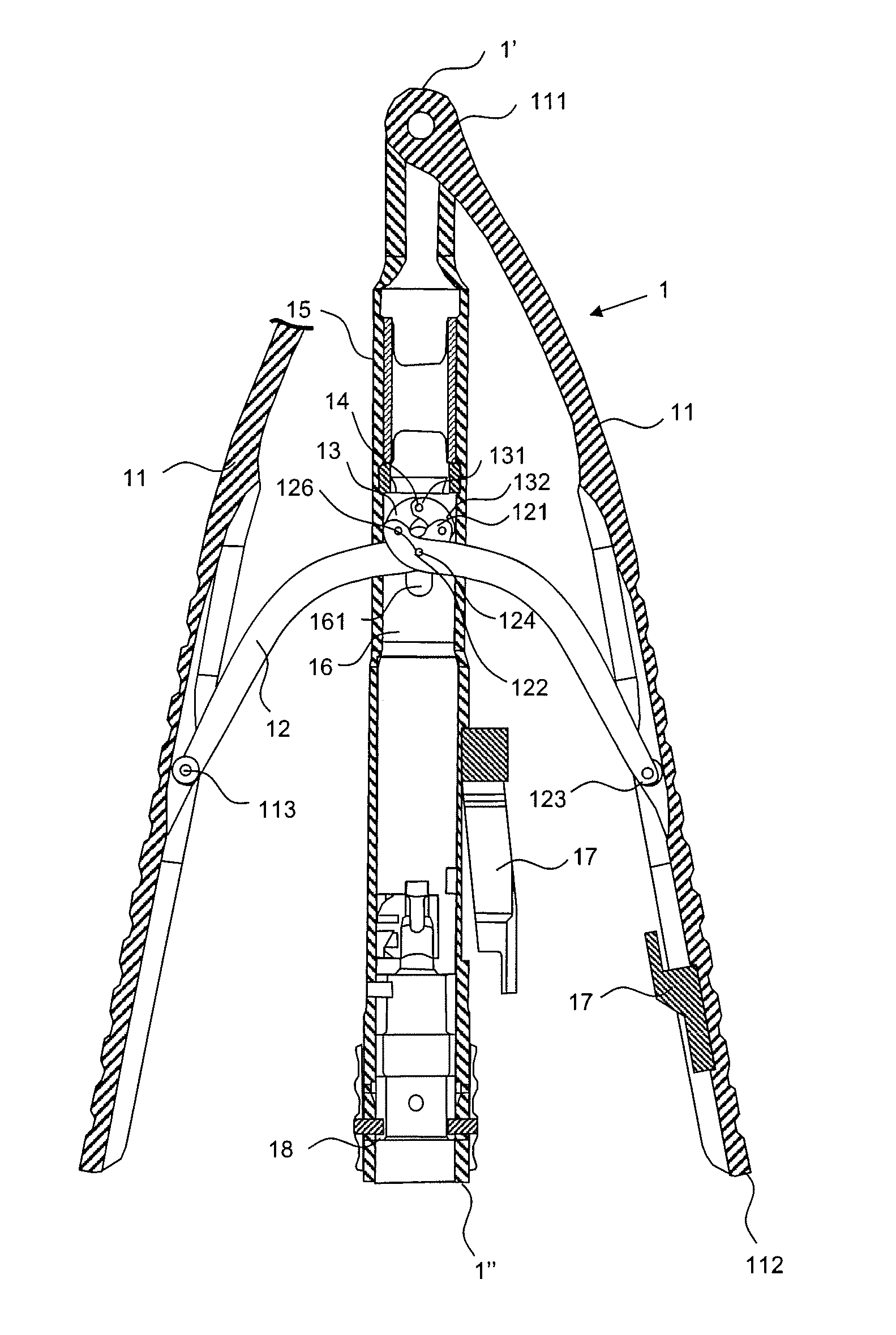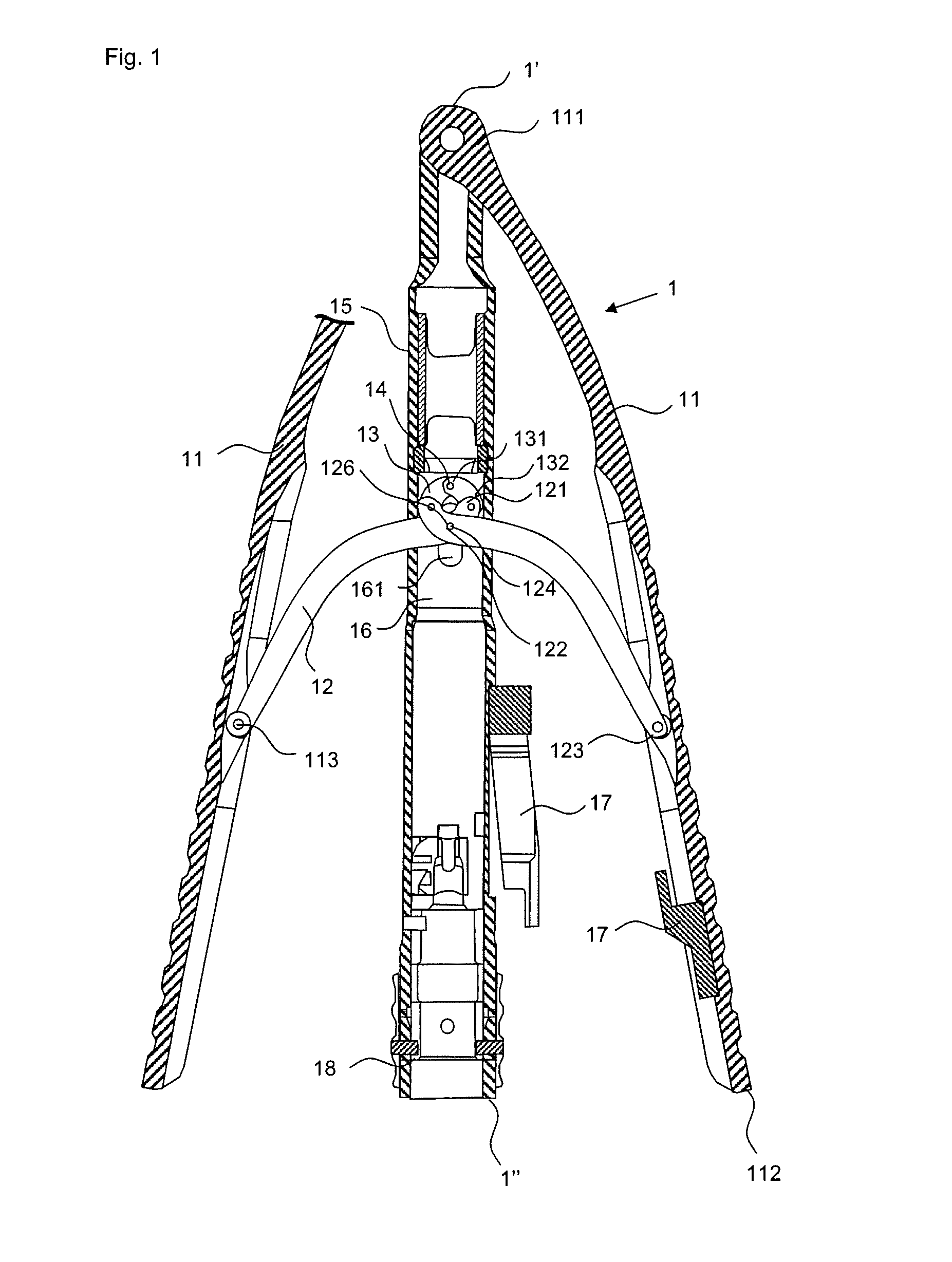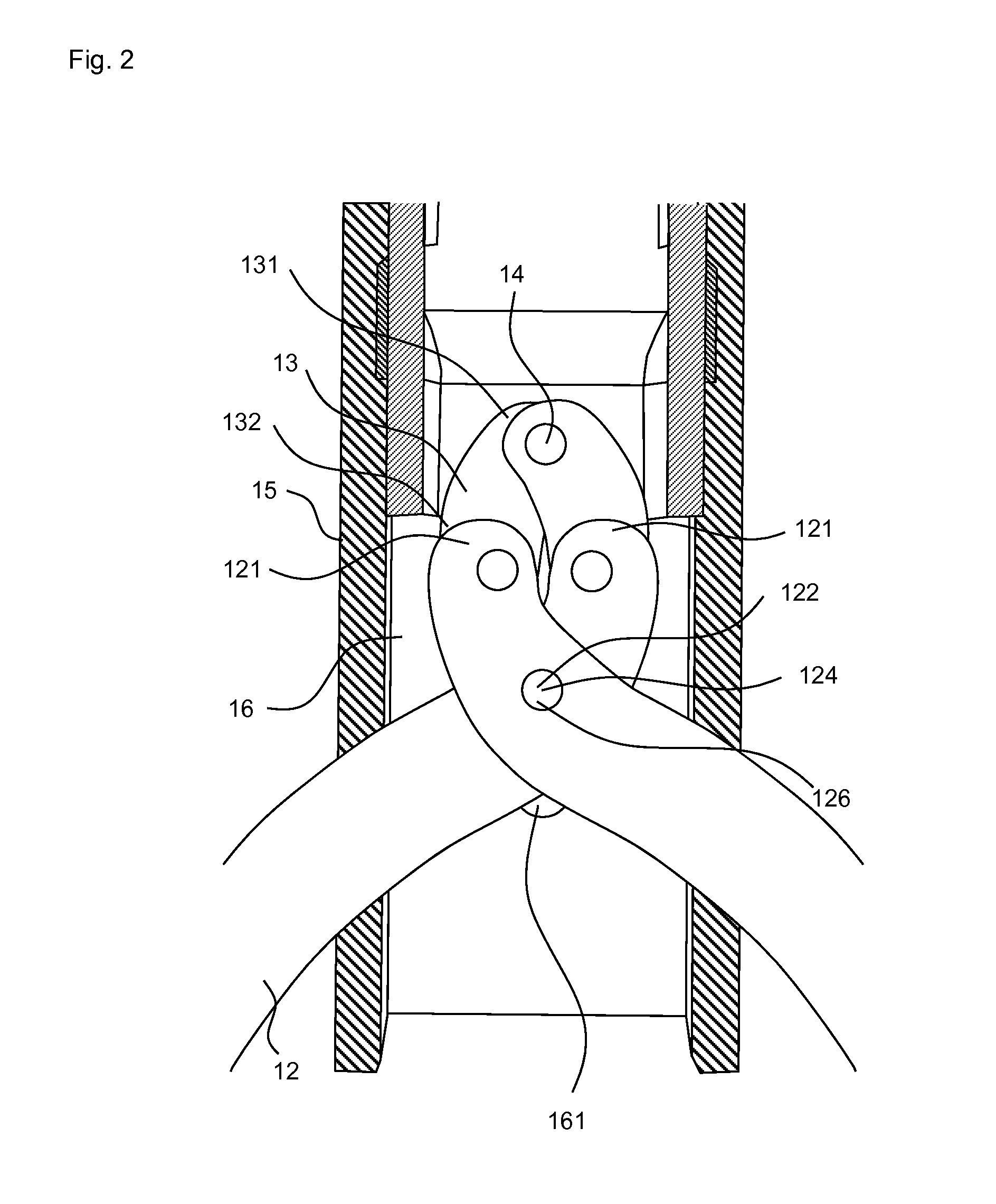Actuation grip for a microsurgical instrument, and microsurgical instrument
a microsurgical instrument and actuation grip technology, applied in the field of microsurgical instruments, can solve the problems of reducing control precision, not entirely homogeneous transmission ratio, and greatly limited maximum possible transmission ratio, and achieves the effects of improving transmission ratio, less play, and more homogeneous transmission
- Summary
- Abstract
- Description
- Claims
- Application Information
AI Technical Summary
Benefits of technology
Problems solved by technology
Method used
Image
Examples
Embodiment Construction
[0035]An actuation grip 1 according to the invention has two grip parts 11, which are coupled rotatably to the outer shank 15 at a common point located at their proximal end 111, as is shown in FIG. 1, the latter showing a longitudinal section in which the sectional plane contains the longitudinal axis of the shanks 15, 16. According to the invention, both grip parts 11 extend as far as the proximal end 1′ of the actuation grip 1, wherein one grip part 11 is shown sectioned on account of the position of the sectional plane. At an attachment point 113 located between the proximal end 111 and the distal end 112 of the grip parts 11, the latter are each rotatably coupled to a first long S-shaped lever 12, such that, with two grip parts 11, two first levers 12 are present which, at their ends 123 directed toward the grip parts 11, are coupled rotatably thereto. Between their ends 123 directed toward the grip parts 11 and their ends 121 directed away from the grip parts 11, the first lev...
PUM
 Login to View More
Login to View More Abstract
Description
Claims
Application Information
 Login to View More
Login to View More - R&D
- Intellectual Property
- Life Sciences
- Materials
- Tech Scout
- Unparalleled Data Quality
- Higher Quality Content
- 60% Fewer Hallucinations
Browse by: Latest US Patents, China's latest patents, Technical Efficacy Thesaurus, Application Domain, Technology Topic, Popular Technical Reports.
© 2025 PatSnap. All rights reserved.Legal|Privacy policy|Modern Slavery Act Transparency Statement|Sitemap|About US| Contact US: help@patsnap.com



